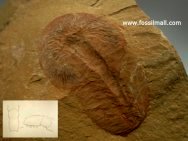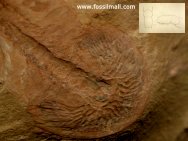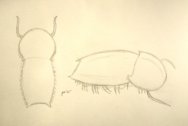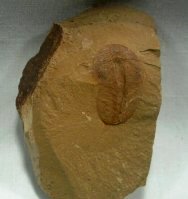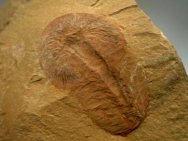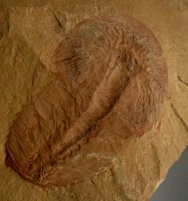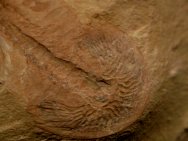Naraoia spinosa
Zhang & Hou, 1985
Phylum: Arthropoda, Stem-group Chelicerata, Order Nektaspida, Family Naraoiidae
Geological Time: Early Cambrian (~525 million years ago)
Size: Fossil 26 mm long
Fossil Site: Chengjiang Maotianshan Shales, Quiongzhusi Section, Yu’anshan Member, Heilinpu Formation, Mafang Village, Anning, Yunnan Province, China
|
The
Naraoiidae are arachnomorphs and include Misszhouia and Naraoia,
with this one, Naraoia spinosa, named for the spinose cuticle so
well preserved here. The species is one found in several locations
within Yunnan Province. The diversity of soft-tissue fossils is
astonishing: algae, medusiforms, sponges, priapulids, annelid-like
worms, echinoderms, arthropods (including trilobites), hemichordates,
chordates, and the first agnathan fish make up just a small fraction
of the total. Numerous problematic forms are known as well, some
of which may have This one shows many of the classic features of the taxon, even the diverticulae (digestive glands) and the central gut are evidence, as is the soft cuticle that betrays the outline of the body. Even if it is not a true trilobite, it is sure to be a coveted addition to any collection. What makes this one even more unusual is the fact that some of the internal organs have been preserved in three dimensions, rather than the typical flat specimens most often seen. Also see: Chengjiang Biota List Chengjiang Fossils |
